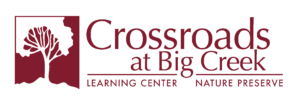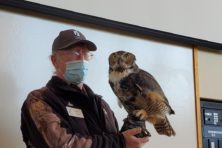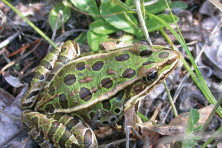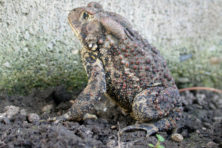Listening to the Birds (and Bats and Frogs)
- Share
- Tweet
- Pin
- Share

Acoustic monitoring provides accurate, unobtrusively gathered data about wildlife populations
by COGGIN HEERINGA, Interpretive Naturalist, Crossroads at Big Creek
Crossroads at Big Creek will conclude its annual tribute to Aldo Leopold on Tuesday, March 7, 6:30 pm, when the Crossroads Bird Club hosts a public lecture by Dr. Gary Casper of Great Lakes Ecological Services. He will describe Crossroads’ multiyear bird-monitoring program and the tools involved, including automated recording systems and point counts.
Those include Casper’s acoustic monitoring program, which began in 2021. His baseline survey identified 39 species of conservation concern. Several recording devices, strategically located throughout the preserve, recorded bird (and frog and bat) songs and calls.
Why sound? Can’t we just go out and watch birds?
To start with, if a bird is still alive, it has learned to stay hidden. Birds are really hard to see, especially after the spring green-up. They are also active very early in the mornings, late into the evenings and, in the case of migrating birds, at night. One researcher, or even a group of community-science volunteers, can’t be everywhere in the preserve 24 hours a day, seven days a week. And a trail camera works only if a bird or animal passes directly in front of the lens.
The truth is, we don’t want a team of people out observing all the time. No matter how well camouflaged and stealthy humans are, it is inevitable that they will disturb the very birds they are trying to protect. This is especially problematic during the breeding season, when humans disturb active nests. If parent birds are flushed, the young are vulnerable to predation or exposure. Sometimes breeding birds even abandon a nest altogether following a disturbance by a human or a dog.
Migrating birds, seeing humans, might also avoid landing on our mudflats and in our wetlands. And our mudflats and estuary are essential stopover spots – places where birds can rest and, more importantly, feed to fuel themselves for their journeys. How unfortunate if we discouraged our target species from using our stopover habitats.
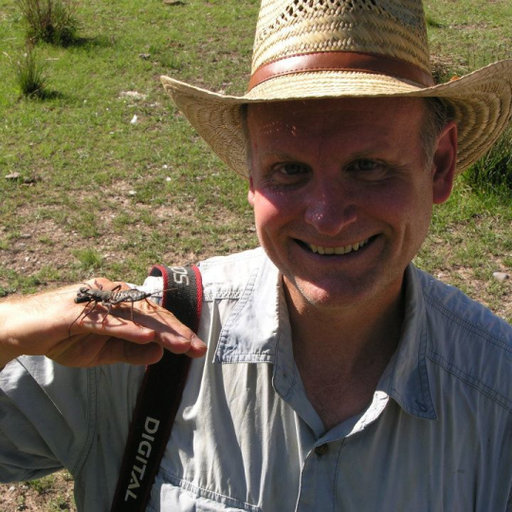
Finally, birders – even great birders – make mistakes. By recording bird songs and calls, we have precise, indisputable records of dates and species.
Understand, though, that acoustic monitoring is but one method for documenting wildlife populations. That’s why we have hired Dr. Casper as a consultant and why we’re organizing a number of community-science research-project opportunities during the coming weeks.
Currently, Crossroads at Big Creek is involved in a major restoration project, with the objectives of increasing climate-change resilience with a diversity of habitats, diversity of structure and diversity of native species. Our vision is guided by Crossroads’ significance as a migratory-bird stopover and habitat provider for spawning fish and other wildlife.
Thanks to grant funding, we are spending hundreds of thousands of dollars, and our staff, contractors and volunteers – we call them Habitat Healers – are putting in countless hours of labor. They not only make our preserve a sustainable wildlife habitat, but they also serve as examples for others who are hoping to improve degraded land.
How will we know whether our efforts actually benefit wildlife? Through wildlife monitoring. By establishing a baseline of birds (and other wildlife populations), and then comparing these to future counts, we will have quantifiable data to help us with future management decisions.
Finally, the Bird Club is not a formal organization – yet, anyway – but rather, a gathering of people who are interested in birds. Consequently, all bird enthusiasts are urged to attend this fascinating program and to be inspired by the example of Aldo Leopold.
Learn more about the programs at Crossroads at Big Creek Learning Center and Nature Preserve, 2041 Michigan St. in Sturgeon Bay, at crossroadsatbigcreek.org.

